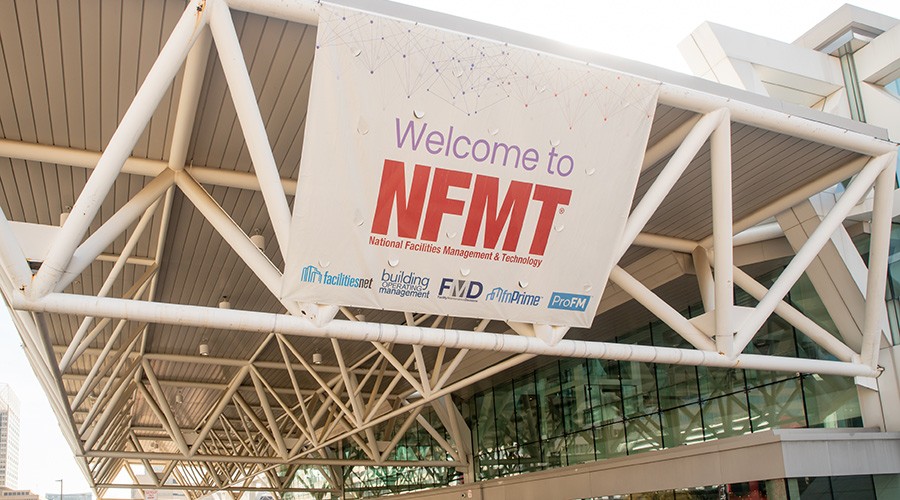Stretching the Budget
Tight finances force managers in government facilities to strategize, prioritize and economize
Taxpayers have never been carefree with their money. For generations, they have questioned and fought tax increases of any kind at all levels of government, and the battles likely will never end. While the sentiments behind these efforts might be understandable, the battles have consequences most taxpayers often don’t take time to fully consider in voicing their opposition.
Tax revenues are the sole source of funding for governments, so the budgets of federal, state and local governments are tied directly to the amount of tax revenues.
Maintenance and engineering departments are no exception. For years, managers in these organizations have been the embodiment of the phrase “doing more with less.” But even as government facilities age, operations change and unfunded mandates expand, maintenance and engineering managers continued to struggle mightily with their budgets.
“Sometimes, we don’t get a budget increase,” says Chuck Peterson, director of maintenance and custodial services with the Escambia County (Fla.) School District. “If it does go up, it’s usually 2-3 percent. And some years, it goes down.”
To make the budget work, he says, “you have to think outside the box. You have to balance the budget to get things done.”
A Range of Challenges
Whether the government entity in question is a local school district, a municipality, a state or federal agency, or a state university, the challenge is largely the same: Find a way to stretch the budget to meet the most pressing problems.
“There are wants, and then there are needs,” says Peterson, who has worked for the district for 24 years and oversees 150 maintenance technicians working in 75 buildings. The district’s funding comes largely from the state of Florida — about 75 percent — as well as the local and federal governments.
“Certainly, you want every school to look pristine,” he says. But tight finances often force him to curtail maintenance activities, such as replacing carpeting. Or workers might mow the grass every seven days instead of every five. HVAC maintenance, however, is a priority, he says. Parents will complain a little if the paint on the walls is peeling or if the grass is 3 inches tall, but they’ll call their legislators if their child is cold in school.
“When an HVAC system breaks down, that gets fixed,” he says. Unforeseeable events also can wreak havoc on budgets. For example, after Hurricane Ivan tore through the area in 2004, the cost for construction materials rose, sometimes as much as 55 percent.
“Of course, we didn’t get a 55 percent increase in our budget,” Peterson says.
While the grounds services department at Arizona State University faces a slightly different set of challenges, its funding hurdles are familiar. The department hasn’t received an increase in its operations budget in the last three years, says Ellen Newell, the department’s assistant director. She adds the facilities department on several occasions reallocated money within the department to grounds services.
Among its biggest challenges is the burgeoning enrollment at the university, which has 646 acres.
“The student population is growing, but we’re landlocked, so the grounds are used more intensely,” she says. “There’s more feet pounding on the ground.” To supplement its budget, the department has applied for and received two state grants totalling $17,000 for urban forestry.
“Now, we’re looking for more money outside the department,” she says.
Among the biggest areas of spending for the 74-person department are fuel and material costs related to vehicle operation. These and other challenges have forced the department to completely rethink how it carries out its activities and purchases all types of products and services.
Value Decisions
Managers in organizations that rely on public funding have become experts on stretching a budget.
“We make sure we look very closely at what we buy to make sure we get value,” Newell says. “We also look more at renting equipment or hiring a contractor to come in to do special project” such as working on large trees and removing stumps.
Peterson says he has extended the district’s garbage hauling contract from three years to four years at the same rate in order to lock in the price and avoid having to pay more.
When problems arise with existing equipment or vehicles, managers must consider big-ticket capital purchases, and that’s where the real headaches can begin.
While equipment breakdowns might inconvenience workers or building occupants, such problems actually can cause tougher problems for managers. Workers still will get paid for the day’s work, and occupants leave the building each night. But managers have to compensate for the lost productivity and find money to replace the equipment.
At the same time, Peterson says, he is under growing pressure to keep his department’s costs in line with those of other counties.
Painting for Savings
In some cases, departments are finding major savings by restructuring time-consuming but essential maintenance activities. For example, Peterson’s district implemented a new plan about 10 years ago to repaint the district’s schools on a 10-year cycle. Before that, Peterson says, work orders from individual school administrators triggered painting projects, often for relatively small areas, such as individual offices.
Because of the resulting spotty nature of the projects, it might have taken up to 21 years for crews to completely repaint any given school.
The old process presented other problems that affected worker productivity and drove up department costs.
For example, school administrators could choose from among 15 different colors of paint for each project. This flexibility meant that a painter had to spend more time washing paint out of brushes — not to mention potentially driving between jobs — and each project might create a half-gallon of leftover paint that either had to be saved or disposed of, which also is expensive. The new system eliminated these problems, Peterson says.
First, the department can buy paint in bulk at a lower price because administrators now can choose from only two colors.
Second, because only two colors are available, painters spend less time washing brushes and more time painting. The amount of extra paint also has dropped sharply because any leftovers likely will work for the next project.
Third, painters spend next to no time traveling between jobs because they work at one school for months at a time.
“The customers are satisfied, and the painters almost become part of the school’s staff,” Peterson says. “They can be there for seven months.”
Growing Pressure
Rising costs and flat budgets are not the only challenges for Newell’s department. A year and a half ago, the department received word that if the appearance of the campus grounds didn’t improve substantially, grounds services would be outsourced.
In light of such ultimatums, she says, “you learn how to become much more resourceful.” The department has made several no-cost changes in its operations to meet the performance challenge.
First, managers reallocated staff involved in trash collection on campus, moving from one collection time per day to all-day collection. The result is the campus generally looks cleaner, Newell says.
Second, managers and staff reviewed communications costs and effectiveness and opted to eliminate all but two desk phones for which the department paid a monthly fee. Technicians now communicate using radios in order to eliminate the high costs related to cell phones.
Third, Newell says, the department reviewed its fleet of vehicles and made changes to eliminate or minimize costs related to fuel and tires, as well as to comply with state mandates for greater environmental friendliness. It kept two of its 2-ton pickup trucks but eliminated smaller pickups in favor of electric carts, solar-powered carts, and three-wheeled bicycles. And to comply with a mandate banning blowers on campus, workers now use brooms and rakes to clean up.
As frustrating and challenging as the process is for managers who work with budgets tied to public funding, it is not likely to get easier any time soon. As a result, success is likely to involve rethinking common wisdom and finding greater efficiency in every area of department operations.
Related Topics:











